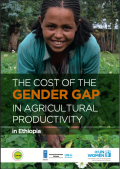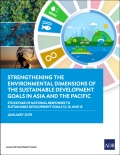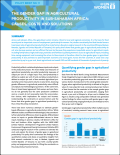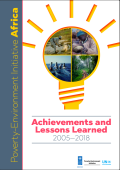
This Report helps to lay the groundwork for deeper investigation as to where to invest for the most cost-effective policies. Our analysis finds that women’s lesser capacity to purchase pesticides, herbicides, and fungicides is an important constraint contributing to the gender gap in farm crop productivity in Ethiopia.

This report presents the results and findings of the technical assistance project’s regional stocktake on national responses to SDGs 12, 14, and 15 in Bangladesh, Bhutan, Cambodia, Fiji, Indonesia, Kazakhstan, the Lao People’s Democratic Republic, Mongolia, Nepal, the Philippines, Samoa, Sri Lanka, Timor-Leste, and Viet Nam. In addition to this report, the project has also prepared jointly with UNDP–UNEP Poverty-Environment Action, Strengthening the Environmental Dimensions of the SDGs in Asia and the Pacific: Tool Compendium, an inventory of tools for policymakers with special emphasis on SDGs 12, 14, and 15.

This policy brief shows that gender gaps in agricultural productivity do not arise because women are less efficient farmers but because they experience inequitable access to agricultural inputs, including family labour, high-yield crops, pesticides and fertilizer. Equalizing women’s access to agricultural inputs, including time-saving equipment, and increasing the return to these inputs is therefore critical to close gender gaps in agricultural productivity.

This report reviews the Initiative’s successes and failures, and its responses to these. It documents how robust and integrated evidence—along with changes in policy, budgeting, investment and monitoring frameworks and involving a diverse set of actors—has begun to shape the institutions needed to achieve the Sustainable Development Goals (SDGs).

The story told in the pages is one of reaping the rewards of this multi-year, complex effort to mainstream poverty, environment, climate, gender and equity into the heart of government. Results have been achieved through the provision of an integrated approach to mainstreaming the poverty-environment nexus in 24 national and 4,214 local development plans for 17 countries, 93 sector strategies in 13 countries, 84 budget processes in 10 countries and 56 monitoring and evaluation systems in 12 countries.
